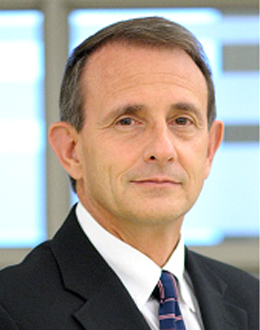THE 4TH INTERNATIONAL
SYMPOSIUM ON THERMAL-FLUID DYNAMICS
(ISTFD 2023)

THE 4TH INTERNATIONAL
SYMPOSIUM ON THERMAL-FLUID DYNAMICS
(ISTFD 2023)

Prof. Josua P Meyer
Department of Mechanical and Mechatronic Engineering
Stellenbosch University, South Africa
Prof Josua Meyer, was in April 2022 appointed as a professor at Stellenbosch University. Before this appointment he was a professor at the University of Pretoria. During his professor term he was the Head of Mechanical and Aeronautical Engineering (1 900 students) for 20 years, and Chair of the School of Engineering (7 000 students) for 17 years.
His research has a broad focus on the thermal sciences, but with a narrower focus on heat exchangers. His heat exchanger work focuses on fundamental work in internal forced convection, the transitional flow regime, nanofluids, boiling, and condensation. On an applications level his work focuses on thermal-solar, wind- and nuclear energy. He has grown this research group to approximately 30 full-time graduate students and 10 staff members. During this time he also established various labs with state-of-the-art instrumentation and designed and constructed (with his group members) more than 12 unique experimental set-ups.
He has received 11 different national teaching awards from three different universities, as well as an international award. His videos on heat transfer on YouTube has been watched more than 1.7 million times. He has won more than 43 research awards including 33 awards for best article of the year or best conference paper. International/national awards were given to 12 of his postgraduate students for the quality of their work under his supervision.
For his research he has won the following national and international awards: Thomas Price Award, Rand Coal Award, South African Institute of Mechanical Engineers Medal, LT Campbell-Pitt Award, Literati Award, Chairman’s Award of the South African Institute of Air-conditioning and Refrigeration, and Will Stoecker award. He is a member or fellow of various professional institutes and societies such as ASME, ASHRAE, AIAA, and the Royal Aeronautical Society. He is at present the vice president of the Assembly for International Heat Transfer Conferences. In 2020 he won the National Science and Technology Forum award for developing large numbers of engineering research graduates of the highest quality.
At the University of Pretoria he received the “Exceptional Achiever Award” for the fifth time and he also won the Vice Chancellor’s Exceptional Supervisor Award in recognition of exceptional achievement in supervision for his high quality work as a supervisor/advisor of graduate students. In 2019 he won the Chancellor’s Award for Research for sustained excellent performance, in recognition of exceptional achievement in research and the associated promotion of the University of Pretoria. He is an A-rated NRF (National Research Foundation) researcher. The NRF rating are allocated based on a researcher's recent research outputs and impact as perceived by national and international peer reviewers. A-rated researchers are unequivocally recognised by their peers as leading international scholars in their respective fields, for the high quality and impact of recent research outputs.
His is a “highly cited researcher” according to the ISI and the University of Stanford’s list of top 2% scientists in the world. He is on the editorial board of 13 journals and is editor of 7 journals in his field of research. He has (co)authored more than 800 articles, conference papers, book chapters, and patents and has (co)supervised more than 150 research masters and PhD students. He was on the selection committee of the Franklin Institute Awards Programme (one of the world’s oldest (since 1824)) for the Benjamin Franklin Medal. To date, 117 awards of this institute have been honoured with Nobel prizes.
Title: New Important Perspectives On Internal Convection Works That Have Not Been Identified Before
Abstract:In many thermal science problems, internal forced and mixed convection play an important role in heat transfer as it occurs commonly when heat is being transferred in heat exchangers between from a hot stream to cold stream gas and/or liquids. Normally it is the easiest to teach to students the fundamentals of internal forced convection using a circular tube as geometry. When the fundamentals of the thermal sciences through a circular tube are well understood then it is easier to study more complex geometries. Although mixed convection and not forced convection occurs in most thermal science problems, analytical solutions are lacking. Over the past approximately 60 years analytical solutions, with a significant number of assumptions, were generated to estimate the thermal science aspects we are interested in. In most cases the problems could not be solved analytically, and the assumptions made it solvable. At the same time a lot of experimental work was conducted as well as CFD analyses over the past approximately 30 years. It should therefore be expected that this is a mature topic. However, it is the purpose of this paper to identify and discuss several important aspects that were missed previously and that in future should be taken into consideration. The paper is relevant to smooth horizontal tubes with a uniform heat flux; however, the results are applicable to other cases.